Hollywood Discovers Puebla De Los Angeles
My husband and I have had a love affair with Mexico almost as long as our own. We honeymooned in Mexico City and Acalpulco in 1969. Nearly every year since we have returned to sample the many delights of this wonderful country visiting such cities as Guadalajara, Oaxaca, Morelia, Guanajuato, Vallodoloid and Merida and the glorious beaches of Ixtapa/Zihuatenejo, Puerto Vallarta, Mazatlan and Huatulco. With Mexico, there’s always another town or city to discover each with its own particular character and history or another beach to savor the warm Mexican Pacific.
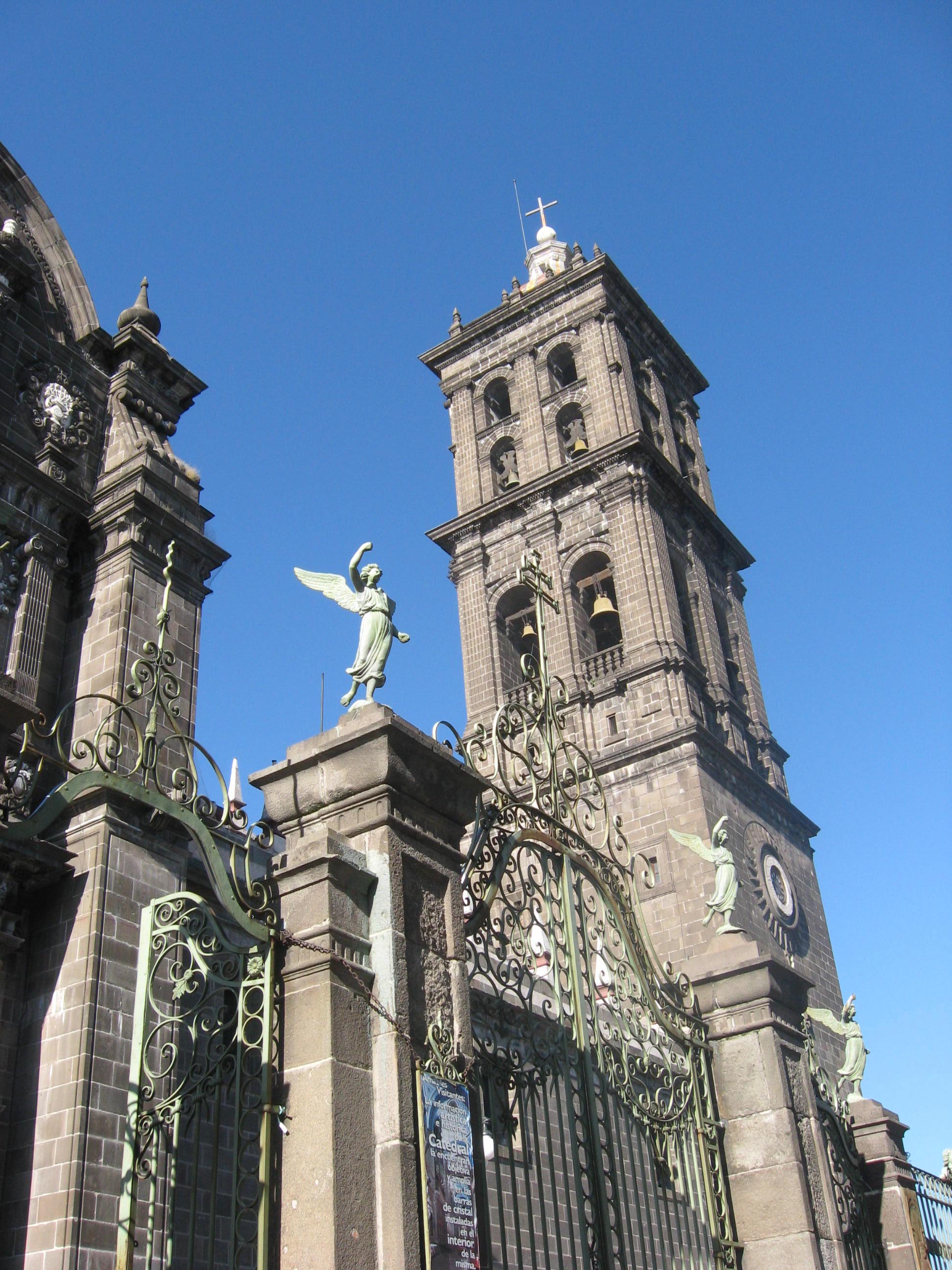
Angels soar above and surround Puebla’s Cathedral de Los Angeles
For many years Puebla has been on our wish list as the home of Talavera pottery available all over Mexico that is produced in that city. I don’t know why it took us so many years to get there. The short two-hour, first-class bus ride from Mexico City International Airport could not not have been easier or more convenient and included reserved seats, a drink and a snack.
The road to Puebla rises out of Mexico City passing pine tree forests and mountain vistas. We’d chosen an overnight flight and caught the first bus and the glorious first light as we rose higher and higher along the highway.
At 7,217 feet, it was cool and the city was barely awake but a taxi was waiting. We soon learned that most of the taxis and many of the cars are Volkswagens as a major plant is located there. It was a short ride to our hotel, and we soon knew this was unlike any Mexican city we had ever seen. Tiles were embedded onto the facades of the buildings and white “wedding cake” adornment was unusual in its brilliance and intricacy. We learned later from our friends at Mexico Tourism that the region includes vast deposits of onyx, but not a softer stone that could be easily carved. The early Spaniards created a substance called “stuc,” a plaster composite that was formed into blocks and carved. We would see stuc carvings adorning buildings and churches all over the historic city and into the surrounding villages.
We had come for the tile but the history and beauty of Puebla far exceeded our expectations.
As we discovered Puebla, along with its architecture and history, we also learned that it had been the location of many films including Man On Fire with Denzel Washington and Frida with Selma Hyack among many other documentaries and Mexican cinematic features.
The foundation of Puebla began with a letter from the bishop of Tlaxcala in 1530 to the Spanish queen outlining the need for a Spanish settlement between Mexico City and the port of Veracruz. According to legend, the bishop had a dream about where to build the city. He saw a valley with woods and meadows crossed by a clear river and dotted with fresh-water springs on fertile land. Then he saw a group of angels descend from heaven and trace out the city. Convinced he had a divine vision, he went out in search of the place and found it. This legend is the source of Puebla’s original name, Puebla de los Angeles.
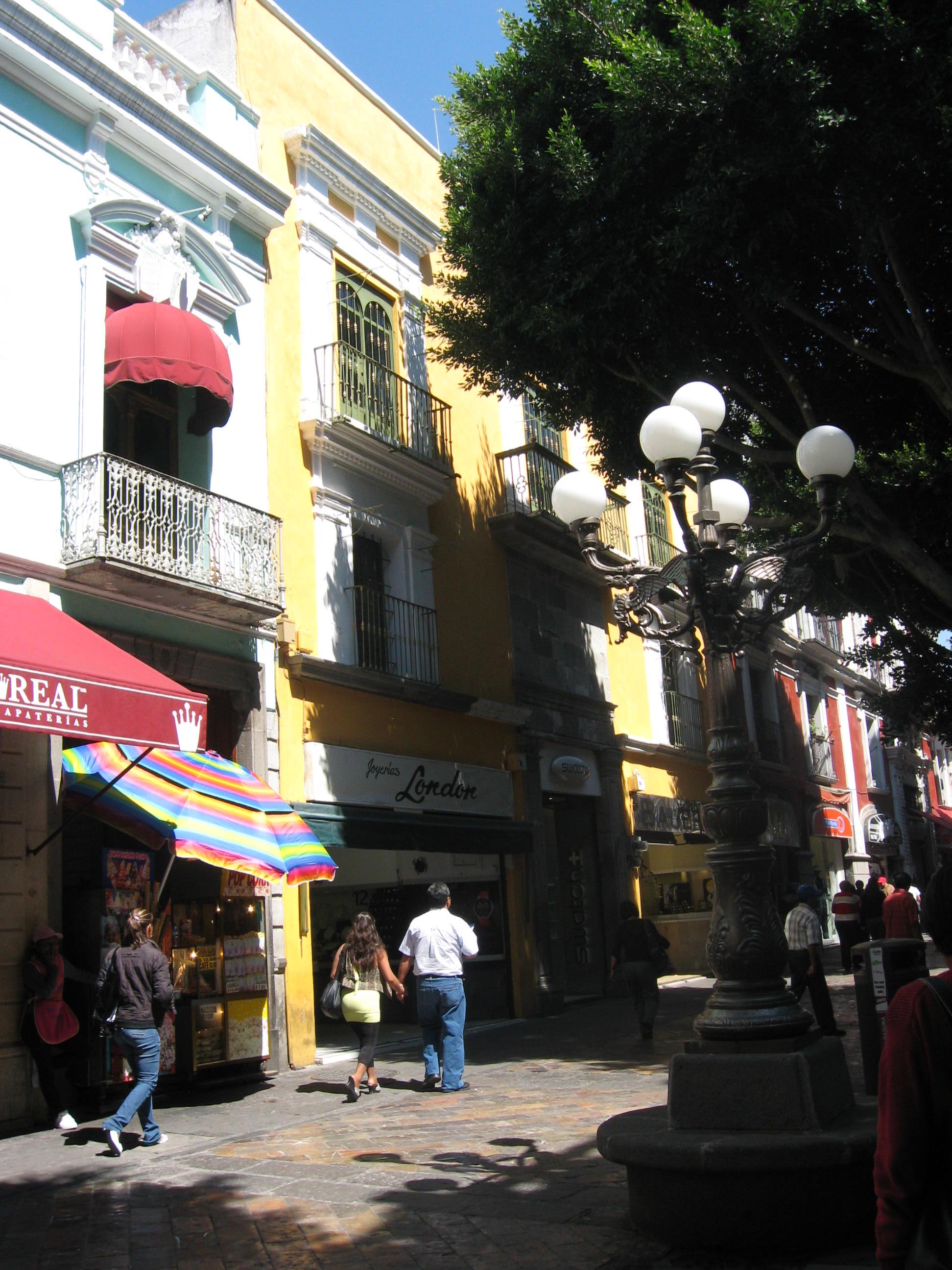
Historic streets house gourmet restaurants and boutiques
The layout of the city is of classic Spanish design, centered on a main plaza, called the Zocalo. By the mid-16th century, water was brought in to the main plaza to a newly installed fountain and a new Cathedral begun in 1575. Its favorable climate and strategic location helped the city to prosper, quickly becoming the second most important city in New Spain. Rather than gold and silver, its riches were in agriculture, textiles and cattle and it continued to prosper.
Of all the places we’ve visited, Puebla is most like a Spanish city. Its Cathedral de Los Angeles’ magnificent interior is similar to those we visited in Toledo and Seville.
But all was not peaceful in Puebla. During the French intervention in Mexico on 5 May 1862 in the Battle of Puebla, defending Mexican forces defeated the French army considered to be the most powerful in the world at the time. Every year Puebla celebrates the defeat of invading French troops and although celebrated in the United States, this holiday is not widely observed in other parts of Mexico.
From 1931 until the end of the 20th century, growth of the city spurred the absorption of surrounding municipalities and in 1977, the federal government declared the city as a Zone of Historical Monuments. In 1987, the historic center of Puebla is declared a World Heritage Site by UNESCO.
Each day we learned more about this fascinating city and its history.
The historical and cultural value of Puebla’s architecture are major reasons the city was chosen as a World Heritage Site. Various styles and techniques such as Baroque, Renaissance and Classic are represented here in over 5,000 buildings. The historic center is filled with churches, monasteries, mansions and the like, mostly done in gray cantera stone, red brick and decorated with multicolored tiles. Puebla is also considered to be the “cradle of Mexican Baroque” both in architecture and in the decorative arts, and one of the five most important colonial cities in Mexico.
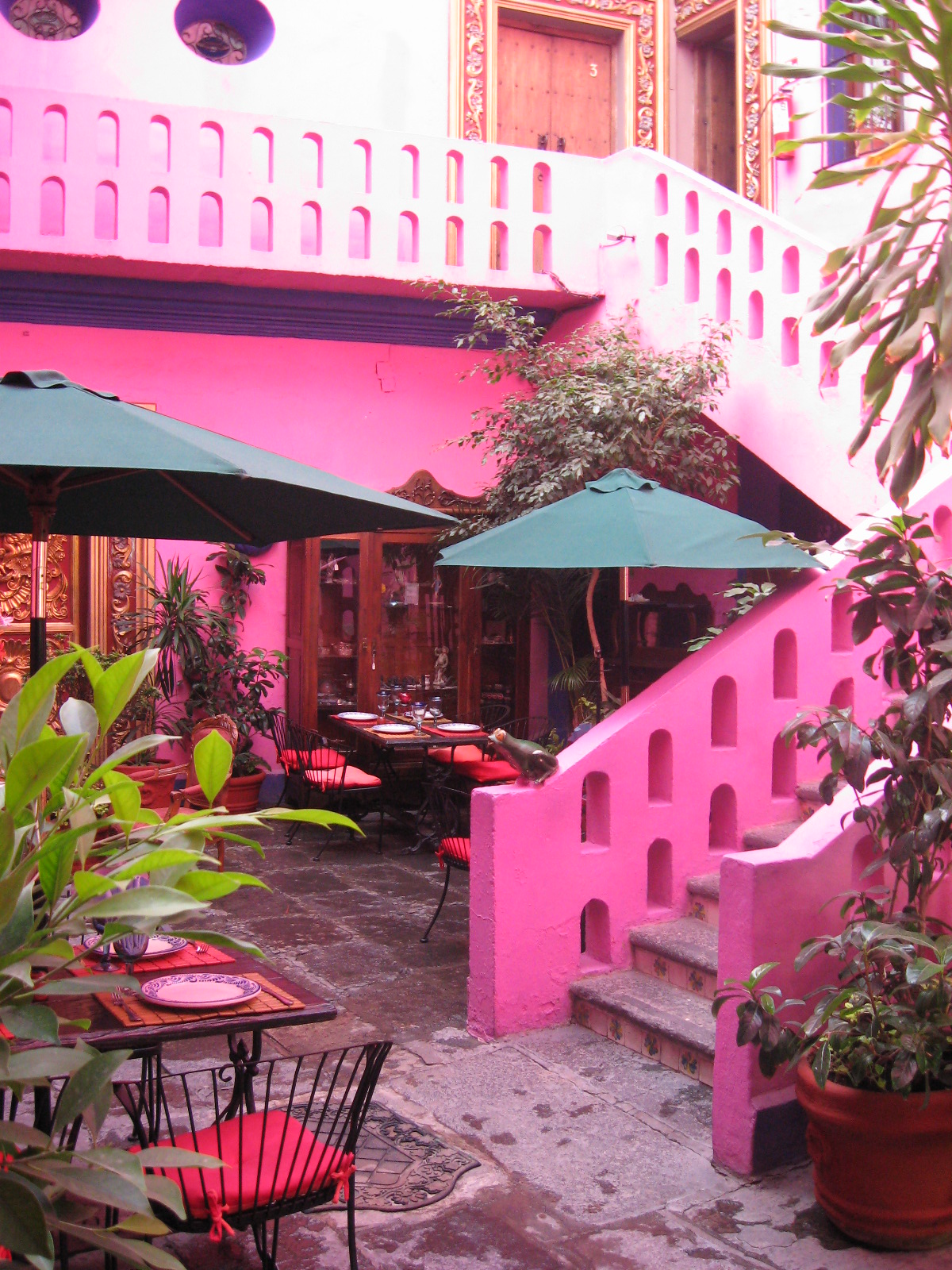
Mesones Sacristia boutique hotel features nine antique-filled rooms and a restaurant in its inner courtyard.
During the end of the 19th and beginning of the 20th century, Puebla remained important culturally and economically. It had a thriving textile industry at this time. Immigration from Europe was encouraged and people from Spain, Italy, Germany France and Lebanon came to live in the city. French influence can still be seen in much of the city’s architecture. German immigration here was one of the reasons Volkswagen built a large factory just outside of the city, later in the 20th century.
As if all this cultural and architectural significance were not enough, it wasn’t long before we discovered that Puebla ia a center of the culinary arts as well. The best-known mole is named after the city, mole poblano. Many food writers and gourmets nowadays consider one particular dish, the famous turkey in mole poblano, which contains chocolate, to represent the pinnacle of the Mexican cooking tradition.
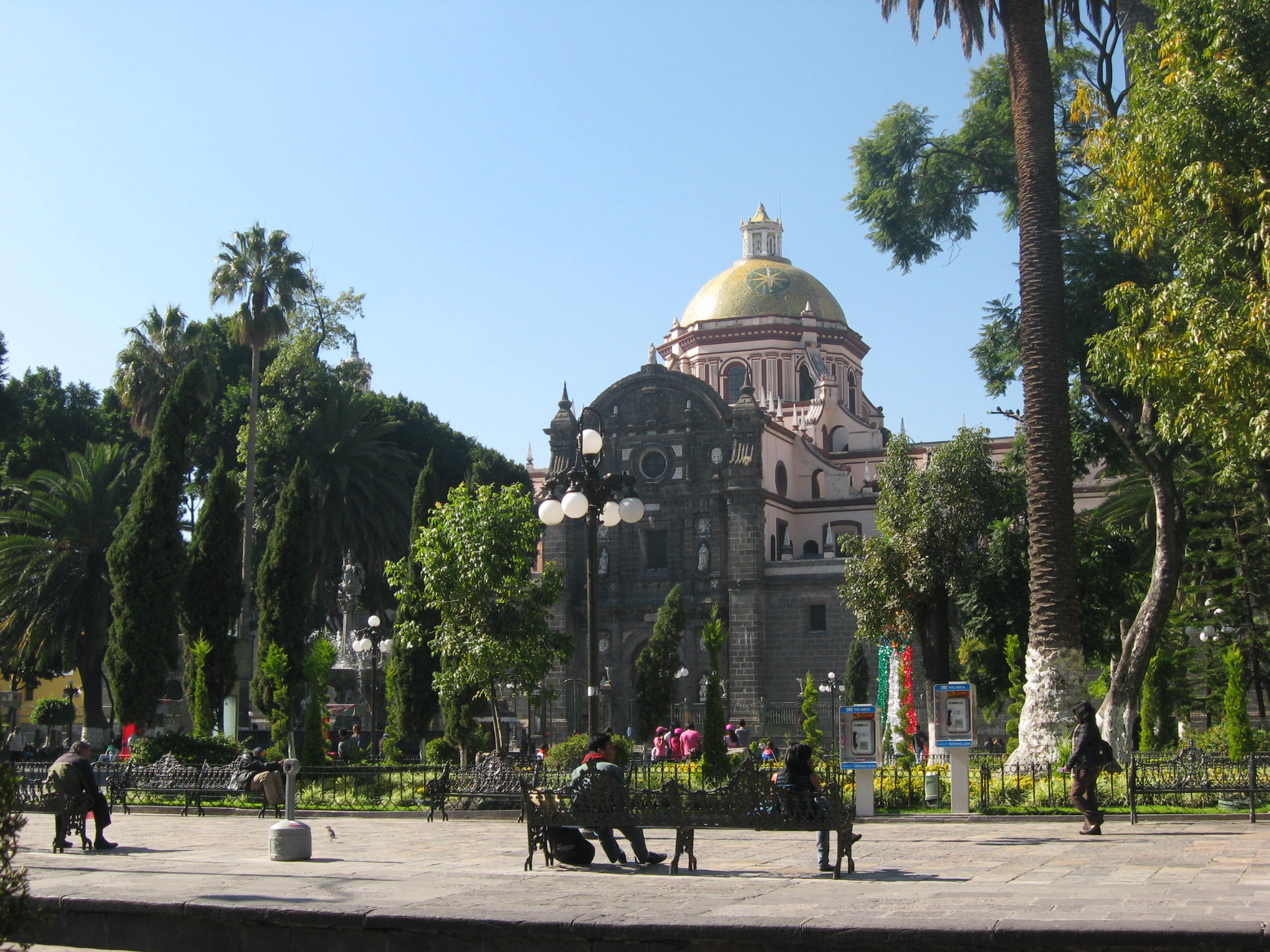
Zocalo is the cultural , political and religious center of Puebla
Soon after its founding, Puebla was well-known for its fine ceramics, especially for the style that would be called Talavera. This has been due to the abundance of quality clay in the region, drawing some of the best artisans. Between 1550 and 1570, Spanish potter from Talavera de la Reina in Spain came to Puebla to teach the locals European techniques of using the potter’s wheel and tin-glazing. These new methods were mixed with native designs to give rise to what became known as Poblano Talavera. The glazing technique was first used for the tiles that still decorate many of the buildings in this city.
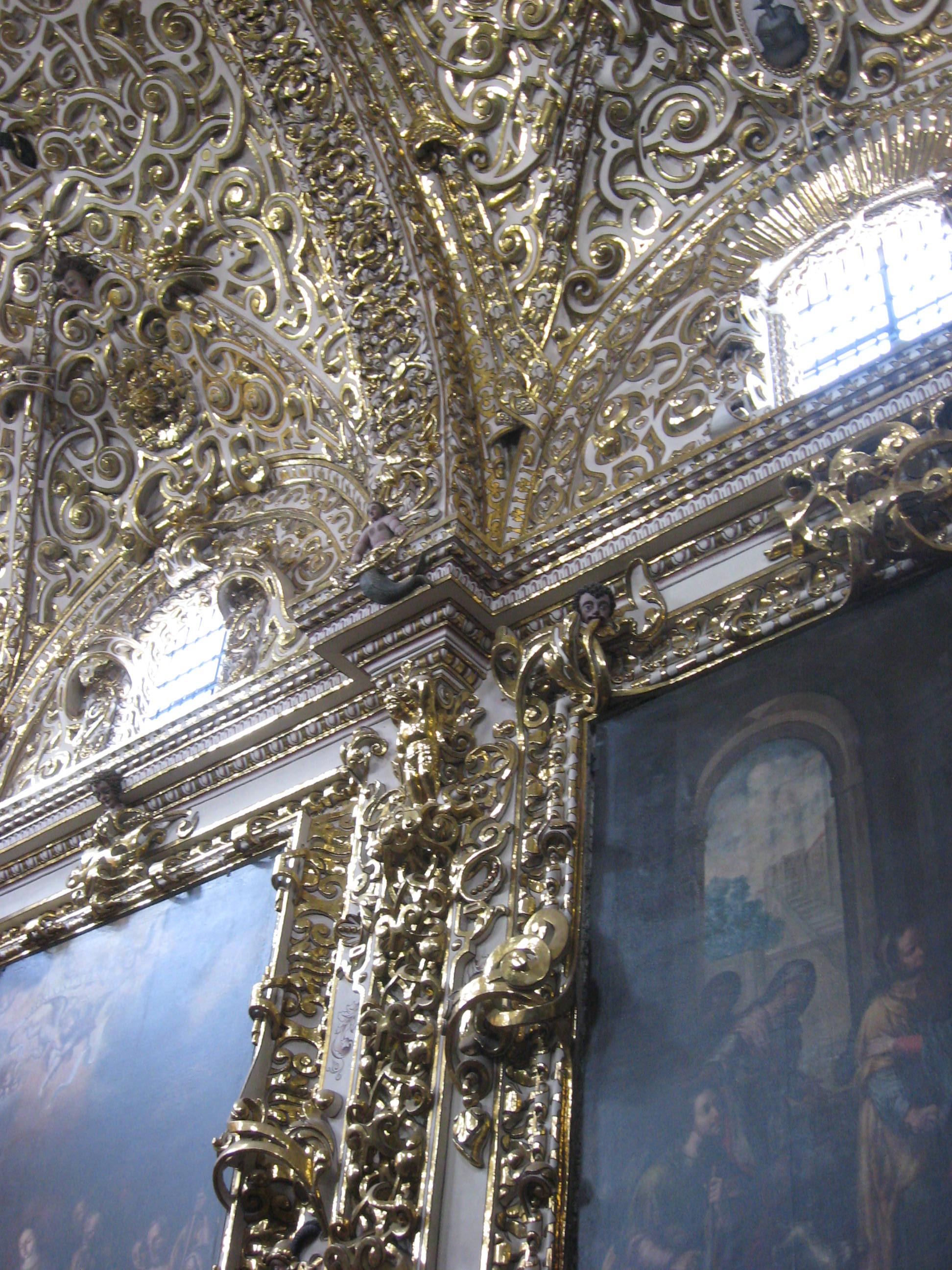
The intricately carved and gilded Chapel Del Rosario is located in the Church of Santo Domingo and is a wonder to behold.
About the turn of the 19th century, there was a rebirth of interest in Puebla tile as collectors discovered it. In 1904 an American named Emily Johnston de Forrest traveled to Mexico with her husband and discovered Talavera. She established contact with scholars, collectors, and dealers who assisted her in building her collection. Eventually her collection was given to the Metropolitan Museum of Art in New York City. Other museums, like the Philadelphia Museum of Art, built their own collections. The Franz Meayer Museum in Mexico City has the largest collection with 726 pieces.
We came for the tile, but discovered so much more. DH